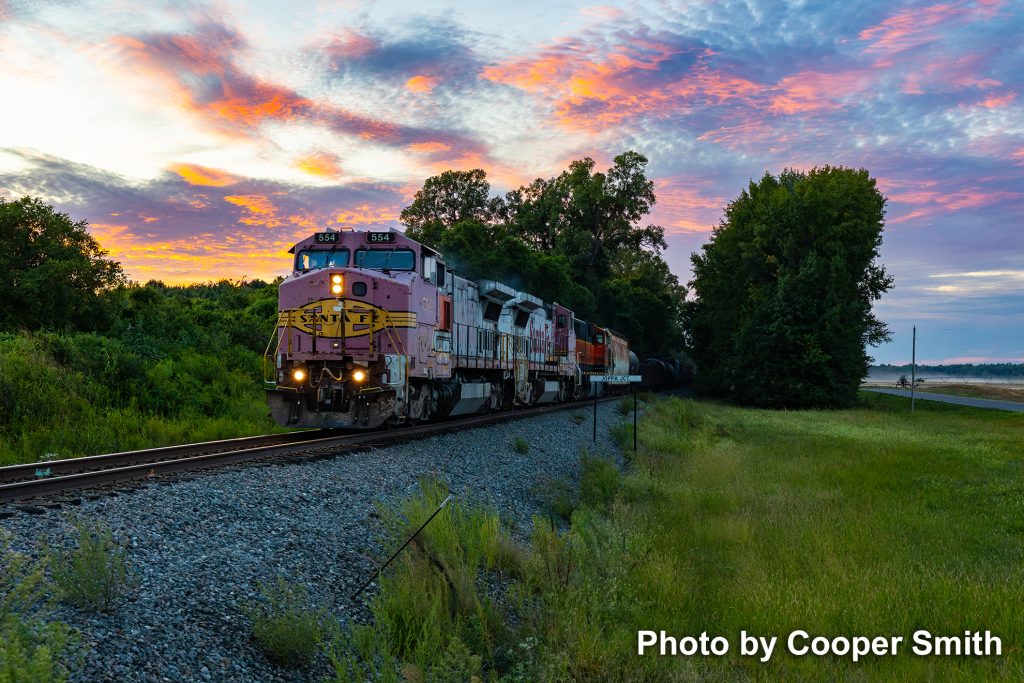
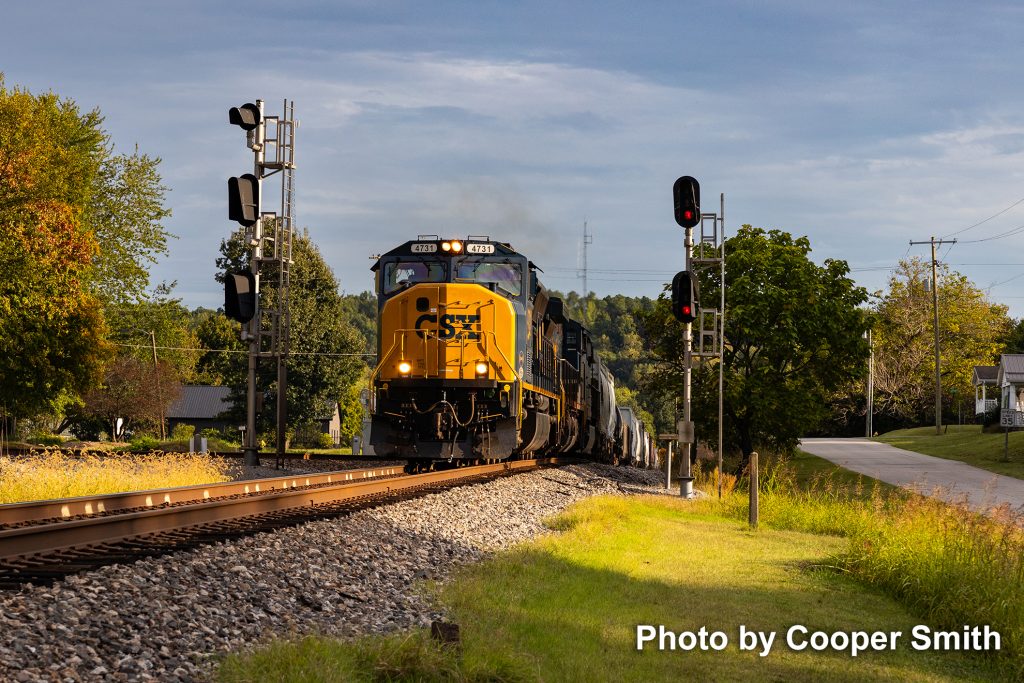
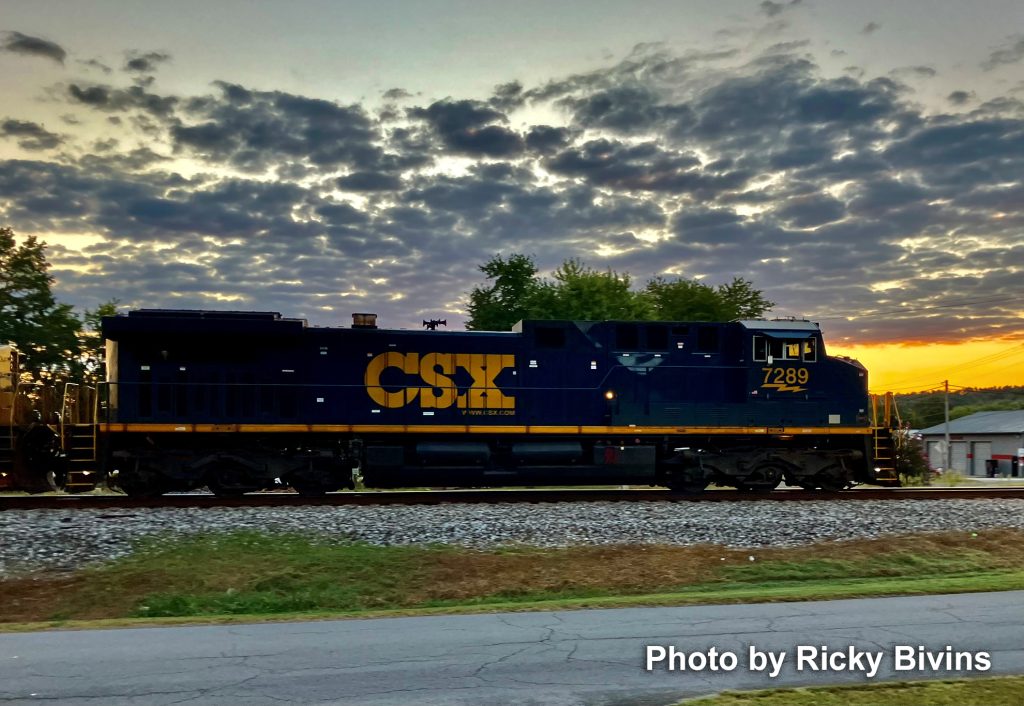
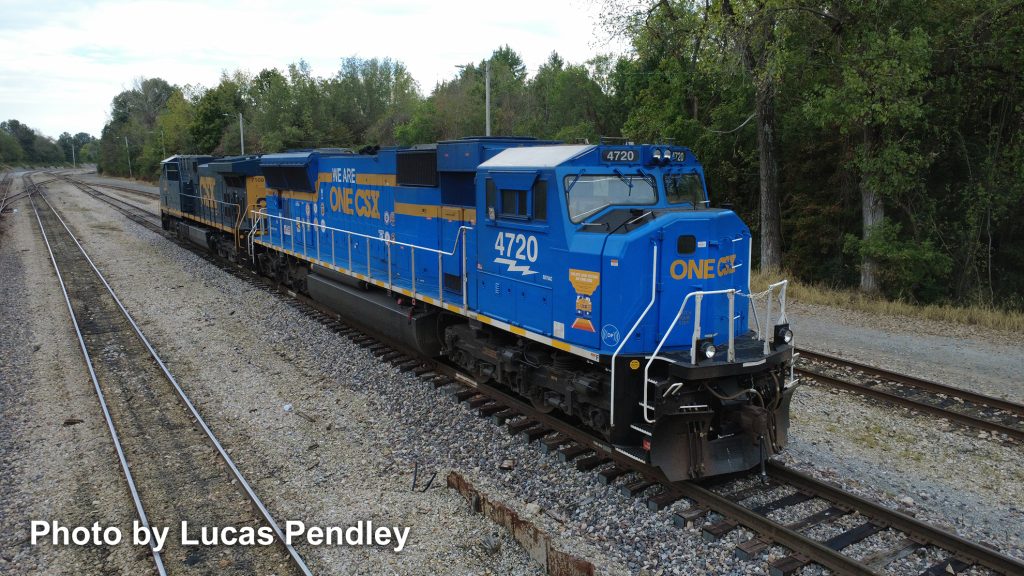
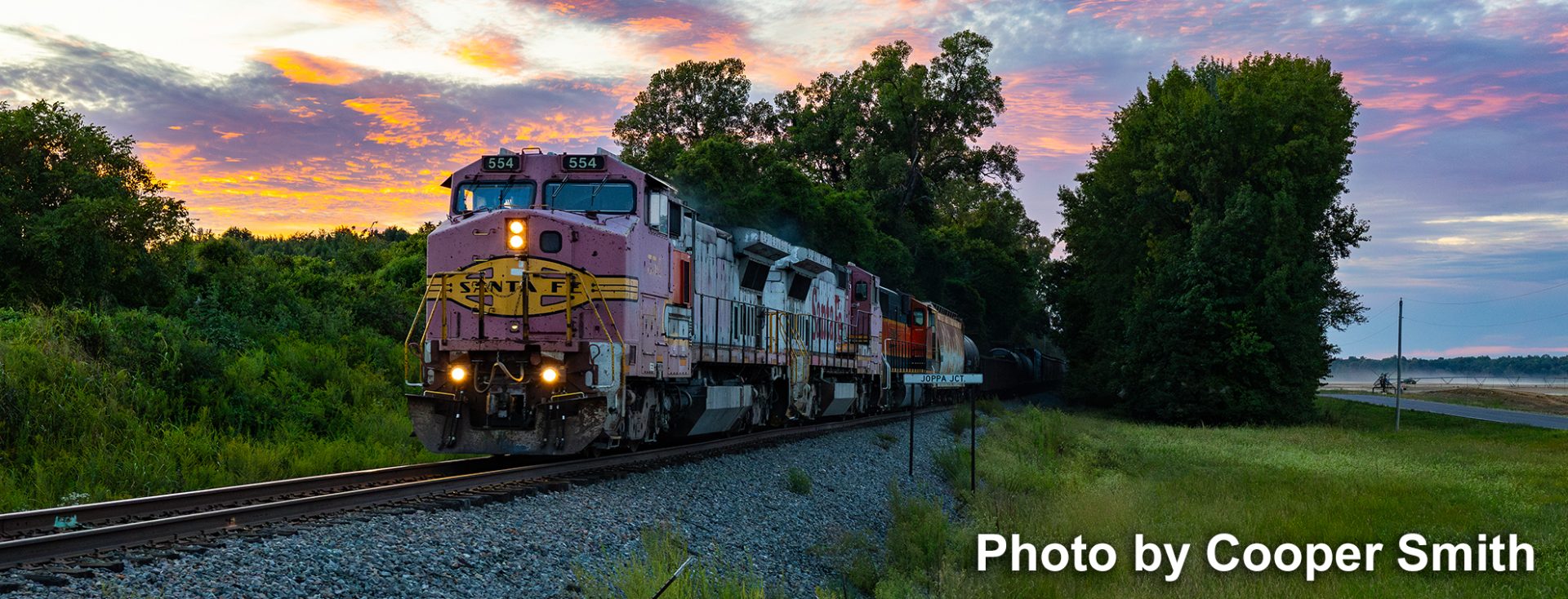





Cando Rail & Terminals on Sept. 10, unveiled its first battery-powered switching locomotive at
the company’s Southlands Terminal in Edmonton, Alberta. The locomotive is fully electric,
retrofitted from a traditional diesel unit, Cando officials said in a press release. To be used for
closed-loop switching operations, the locomotive will eliminate emissions, reduce noise, cut
energy costs and support Canada’s net-zero climate goals, they said. The government of Alberta,
through its Emissions Reduction Alberta program, provided C$2 million for the project, named
Li-Ion 2025. The project cost C$4 million. The locomotive underwent phase one of field testing
earlier this year. Testing will now continue at the Southlands Terminal, with commercial use
planned for early 2026.
Sept 10 (Reuters) – Union Pacific (UNP.N), CEO Jim Vena said on Wednesday he was confident
that the railroad operator would receive a merger approval from the U.S. administration over its
deal with Norfolk Southern (NSC.N). In July, Union Pacific announced an $85 billion stock-andcash
acquisition of the smaller rival, which, if approved, would create the country’s first coast-tocoast
freight rail operator.
Sources indicate that CSX crews have nearly or just completed track laying through the
Nolichucki Gorge between Poplar, NC, and Erwin, TN, on the former Clinchfield line, part of
CSX’s Blueridge Subdivision. As I mentioned last month there are some amazing Youtube videos
showing the work step by step and the incredible machinery being put into action. One of my
favorites is the Herzog belt train – a unit ballast train of sorts with a continuous belt system from
one car to another then funneled to a swiveling boom conveyor for the precise dispersion of
ballast along the track. Some of the “pre-Helene” rail was used but much of the track consisted
of long panels brought in by trucks with extendable trailers. Although track is on the ground,
there will still be much detail work to complete. An unusual sight is to see two six-axle CSX
locos push a ballast train across bare track with no ballast.
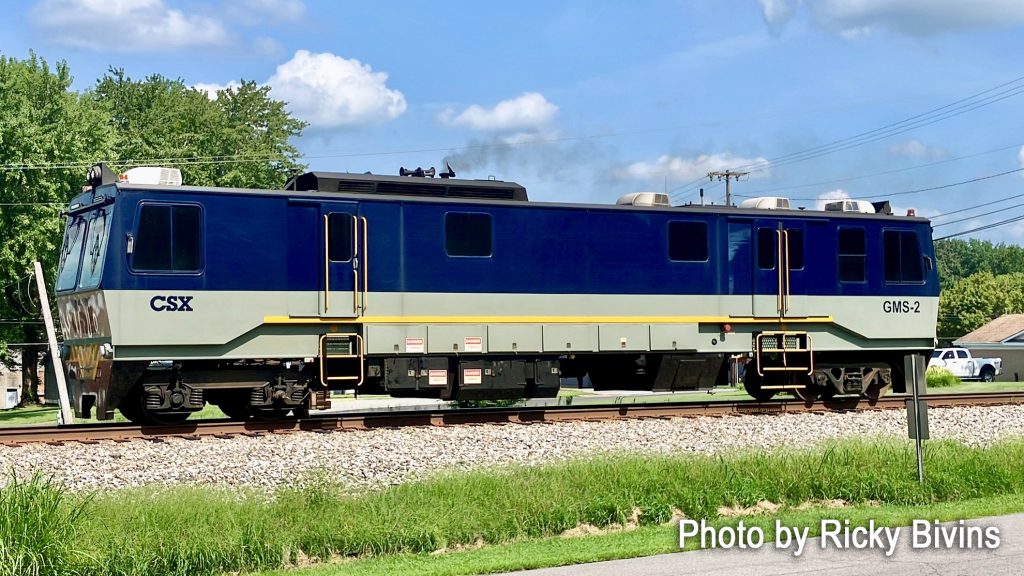
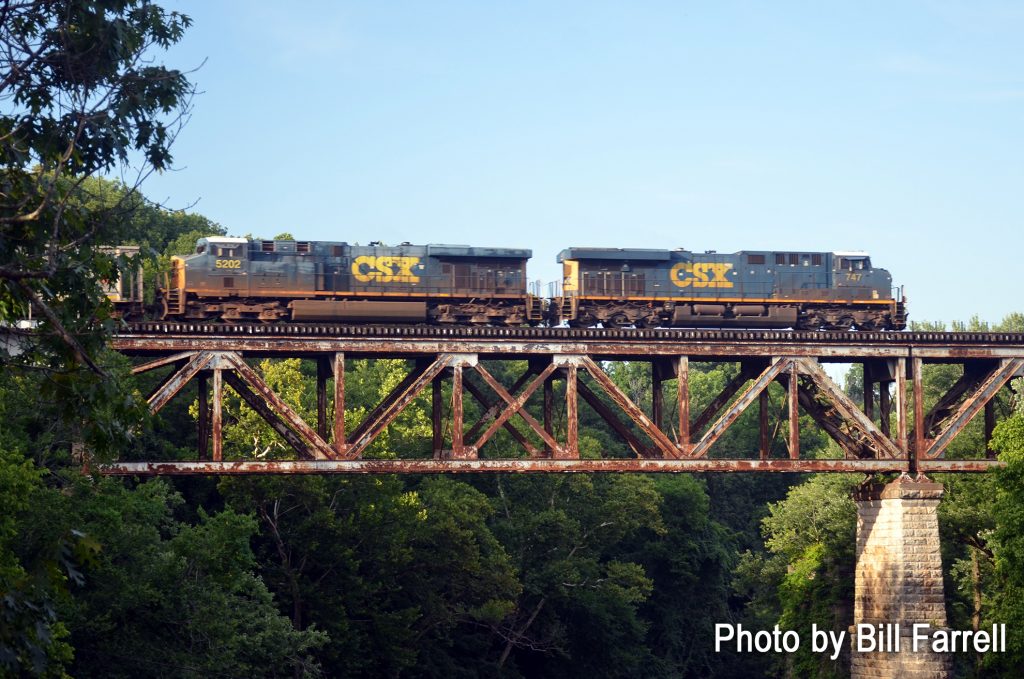
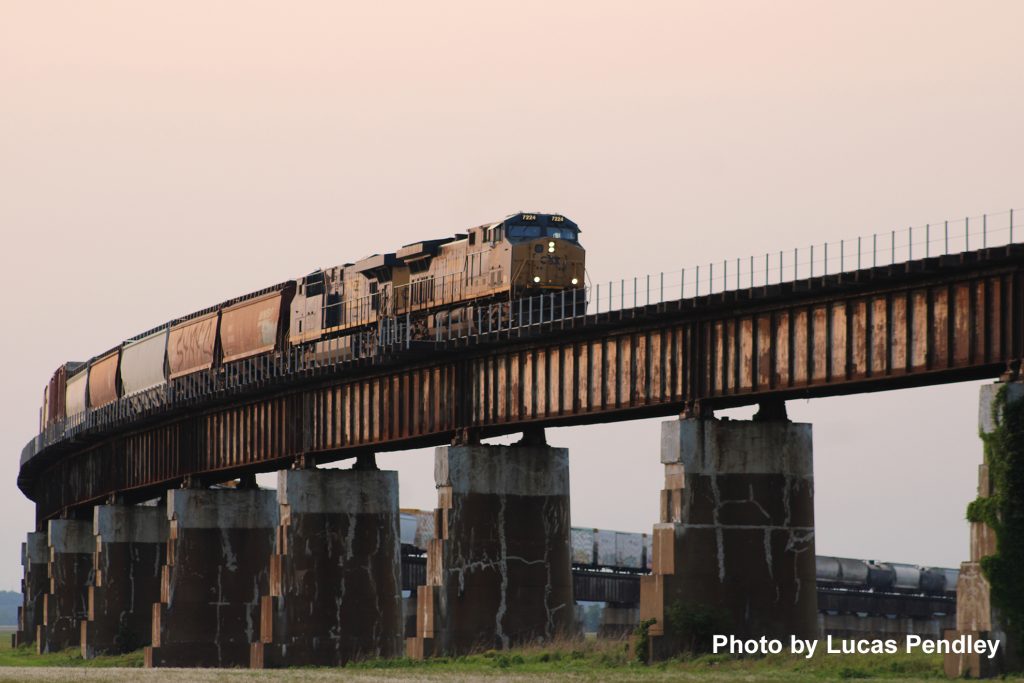
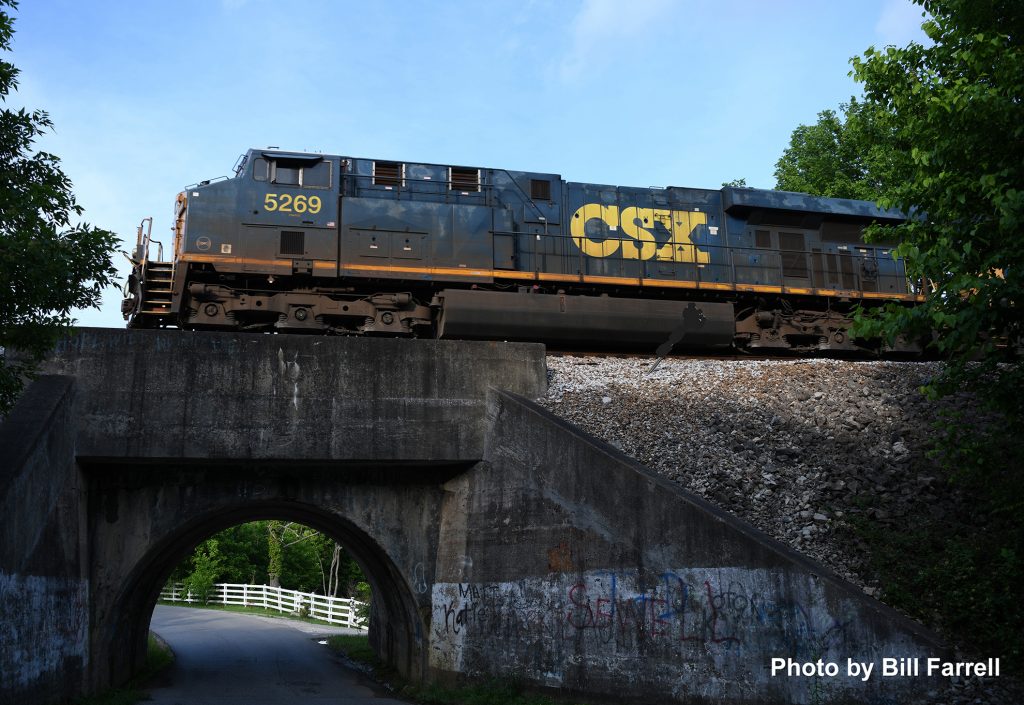
by Gary Ostlund
In a time honored tradition, a veteran engineer and conductor compare time somewhere on the
Southern Pacific System about 1930. Standardizing time by the railroads was a massive undertaking
and played a huge role in providing safe movement of passengers and goods.
Sun Time was standard, with high noon setting the norm. When it was high noon in Chicago it
was 11:27 AM in Omaha, 11:41 AM in St Paul, 11:50AM in St Louis, 12:31 PM in Pittsburgh and
12:50 PM in Washington, D.C. The Buffalo depot had three clocks, one for each railroad. A
Chicago newspaper claimed that Illinois had twenty-seven different times, Wisconsin thirty-eight,
and so on.
Until long distance movement of goods and people, coordinated time was of little concern. For
the railroads though, even with telegraphic dispatching, extensive timetables, and a plethora of rules,
standardized time was seriously needed.
After much political, bureaucratic and entrepreneurial bickering on November 18, 1883 America
finally adopted Standard Time Zones. Their boundaries have remained relatively unchanged.
You can be assured that the two pocket watches held by the gentlemen above have been
inspected regularly, and the conductor checked his with the dispatcher as he picked up his train
orders and headed for the platform. Railroads spent fortunes making certain that time was correct.
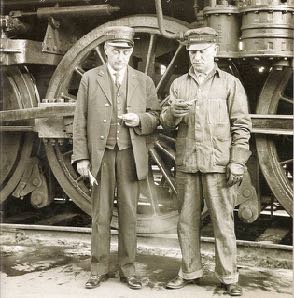
(The picture graced the cover of the Spring 2010 SP Trainline magazine, the official publications of the Southern Pacific Historical & Technical Society. Text excerpts from Trainline and the Routledge Historical Atlas of the American Railroads.)

by Bill Thomas
For starters, let me apologize especially to Jim Pearson for the horrible composition of my photo below.
As I often do, I was heading out the door when I heard the train approaching. So I could get a close up view, I backed out of the driveway and got to the crossing, missing the locomotives. I see a variety of rolling stock, but these Family Lines cars are some of my favorites. I know it’s not the original L&N beautiful blue with the yellow italics lettering, but, it stirs up memories of following the old Hook & Eye line between Marietta and Blue Ridge, GA, during my teen years, 1978-83. The Southern Railway was the only other railroad I knew anything about. There was always something cool about watching local trains on light rails run through the north Georgia mountains. Although I vaguely remember F units at Ellijay, it was the GP38s and 40s that caught most of my attention with those classic EMD road switcher lines. 6-axle units were prohibited on the line due to weight and gauge issues. So, without apology, my favorite post-merger image is still the dark gray, red, and yellow Family Lines scheme, complete with the SCL/L&N, Georgia Clinchfield West Point Route (poor little Western Railway of Alabama got left out other than its association with the West Point).
Historically, the Family Lines was never really a railroad. It was a marketing scheme by the “family”
of railroads which were allied to improve service. The name survived 10 years, 1972-1982, falling one year
after my high school graduation. Now, 44 years later, I’m glad to see some remnants of those days, and now, a CSX heritage unit, rolling past my home in Madisonville, KY. It does this train nerd’s heart good.
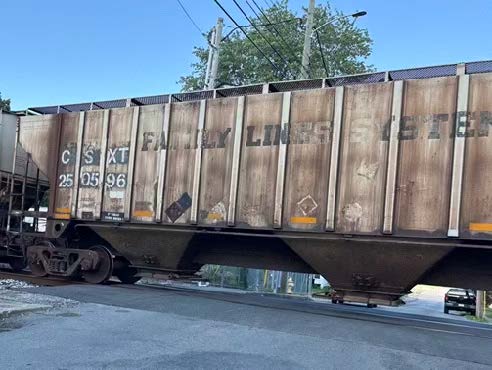
Note: a large portion of this line is now served by The Georgia Northeastern RR, owned by Patriot Rail.
If you’ve not seen any of the 32 episodes of “Rebuilding the Clinchfield Railroad” on Youtube, you are
missing a fascinating series of half to one hour videos. Multiple CSX, RJ Corman, and other crews are
scattered throughout the Nolichucki River gorge between between Poplar, NC, and Erwin, TN,
orchestrating people and machines to rebuild the curvy former Clinchfield line torn asunder by hurricane
Helene in September of 2024. There is no narration, but the creator has chosen good music to
accompany the massive undertaking, and provides limited on-screen text when needed. Go to
YouTube.com and search “Rebuilding the Clinchfield”. These are screen shots from the series.
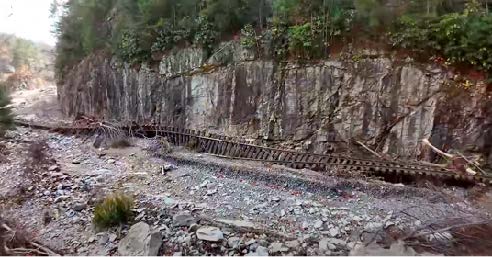
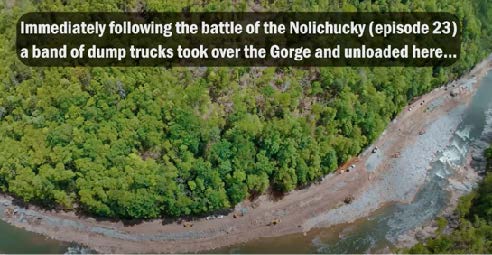
The chapter held it’s first National Train Day celebration at the Morton’s Gap Park Saturday, May
10, 9am to 2pm, and recorded 32 members and guests. Thanks to president Matt Klahn and Sherry
for the food prep and serving. There were good vibes going around and down the track. – By Bill Thomas
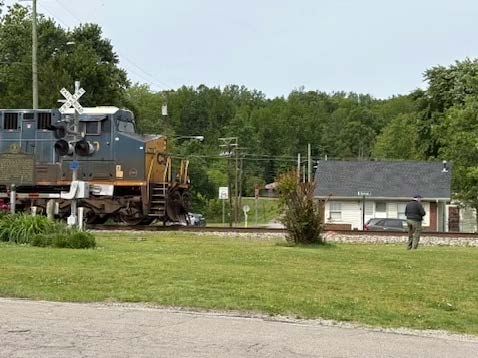
A photo of the photographer!

One of several trains from the day

Some of the crowd

Chef Matt grills up some New York hotdogs and Italian sausage!

AMTRAK’S Hoosier State, racing towards Indianapolis splits the semaphores. Nearly all of
America’s semaphore signals are gone. They had motors and mechanical moving parts, the bane of
management. Newer models have LEDs and other gizmo’s and are driven by computer chip
technology. So capture those digital images soon folks.
This line is the former MONON, officially named the Chicago, Indianapolis and Louisville
Railroad, how dull. No wonder they used the Potawatomi Indian word meaning “tote” or “swift
running.” The Monon rails connected Chicago with Indianapolis, and Michigan City and Louisville,
forming a big “X.” The City of Monon marks the “X.” Indiana claimed the railroad as its own,
calling it the Hoosier Line. Someone even coined a poem:
Up and Down the Monon
everything is fine,
cause that root’n, toot’n Monon,
she’s a Hoosier Line!
What I miss about the semaphores is that as a railfan trekking around the country you could see the
position of the semaphore from adjacent highways. The color indicator was not pertinent. If they
were pointing toward the sky, tracks were clear. If one was horizontal there was traffic nearby,
either coming or going. (Now maybe one of you can tell me why one semaphore is pointed, and the
other squared ?? Really, I don’t know.). Gary Ostlund.
The graphic below was the rear cover of a timetable on the Northern Pacific Railway in 1942. It
caught my eye while perusing through my collection of magazines. We lived in Butte for four years
in the late 60s and early 70s. An extremely interesting place, loaded with history. Few realize that
back in the second half of the 19th Century, Butte was an equal to San Francisco in importance,
competing for its rightful share of trade and commerce, even traveling entertainment venues.
Take the quiz, first covering up the answers.

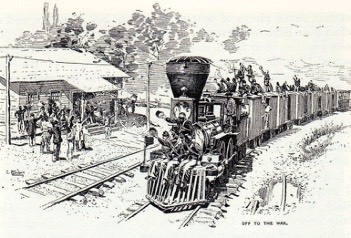
September 13th ( Eastern Standard Time)
Bluegrass Scenic Railroad
175 Beasley Rd, Versailles, KY 40383
11:00 am – Coach $15, 1st Class $20, Hobo (Open air) $20, cab
rides $75. Lunch and explore museum. 4:00 pm – Rail Explorers
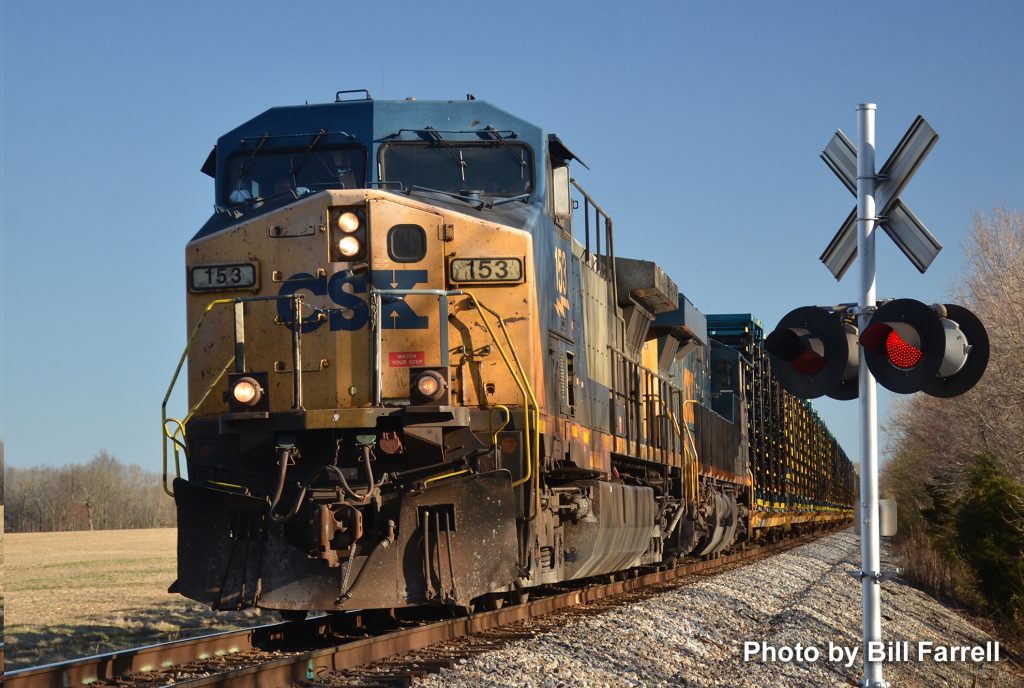

Other Entries
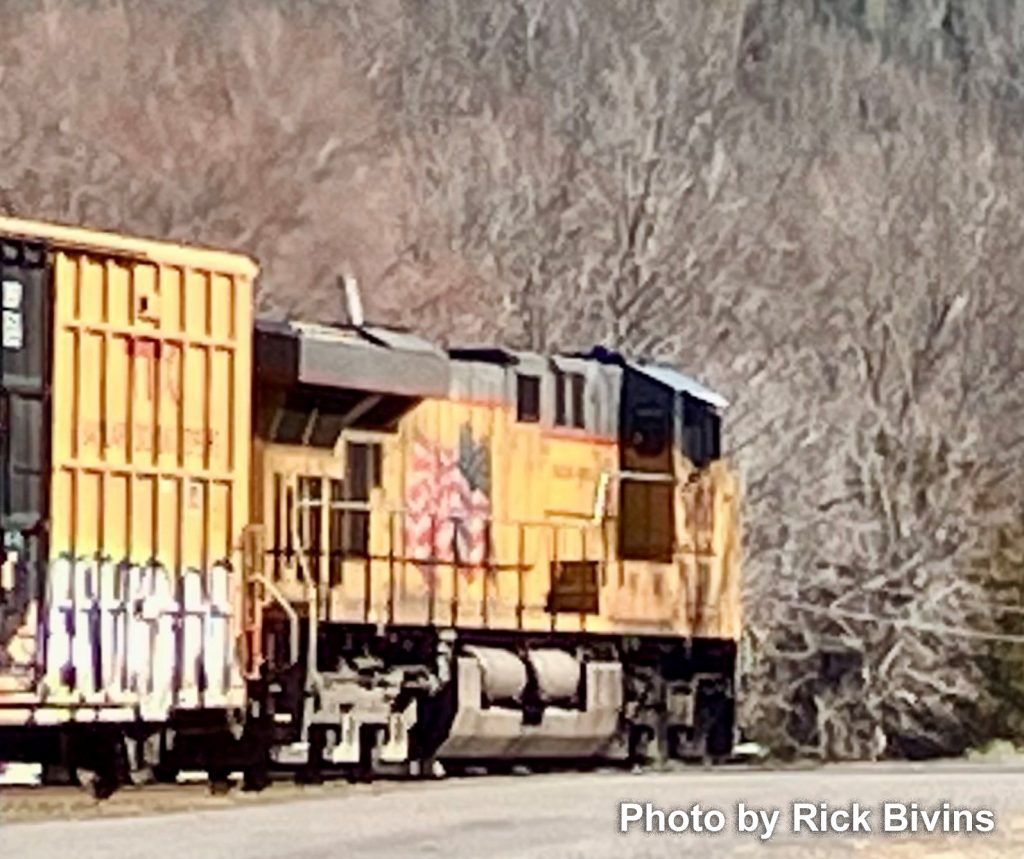
Mark your calendars for the 2025 L&NHS convention!
It will be held the first week in October–October 2, 3, and 4–in Chattanooga. Details, including how
to register, will be in the June issue of the L&N Magazine and on the L&NHS website: lnrr.org
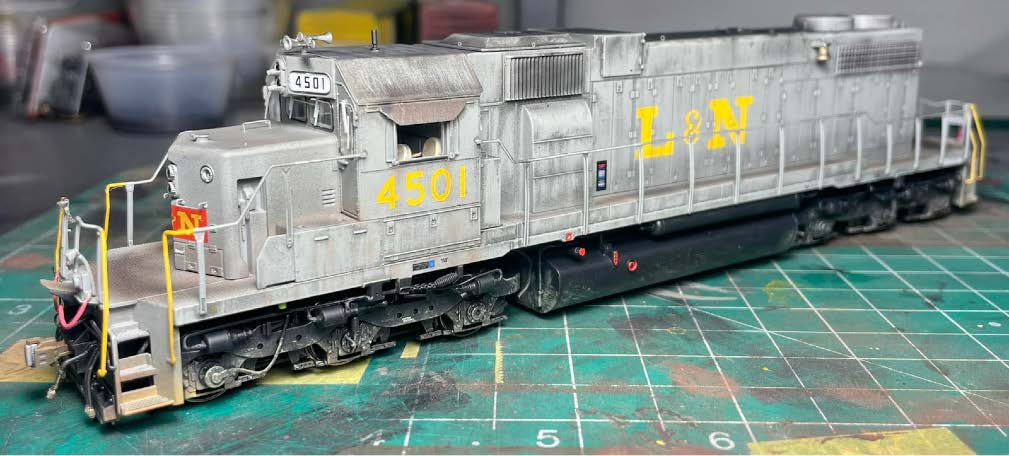
Note: Upon searching for The Illinois Central Historical Society, I found no viable links or reference to an active website. I did locate a private group called The Illinois Central Railroad Heritage Association on Facebook.
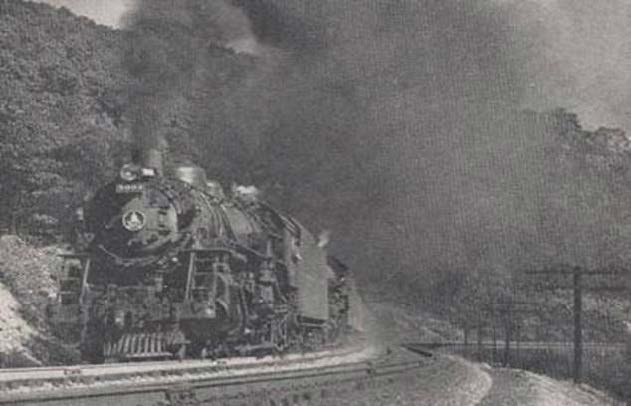
Many of my pictures and stories come from my magazine archives. Thumbing through the editorial comment section of the October 1951 TRAINS & Travel (before the name change to TRAINS) I came across today’s story line. I said to myself, “classic David P. Morgan….” whereupon I went to the masthead and low & behold, Morgan was listed, but only as one of four associate editors under Editorial Director Linn Westcott and Editor Willard V. Anderson. Not sure what to conclude, but prefer to think his fingerprints are all over this story. To those of you old enough to have experienced our beloved long time TRAINS Editor, David P. Morgan and the steam era, this will jog memories. You simply had to be there to fully appreciate…….. Railroading by Ear.
A dozen years or more ago, when the diesel was still a precocious doodlebug, someone said the
internal combustion locomotive would at least make less noise than a steam engine. Listening now
to the sounds that float on the night air, we wonder if we haven’t only traded one sound for another.
And the new sound is about as interesting as the boring drone of a DC-6 at 5000 feet.
The steam locomotive can play upon its exhaust nozzle in any major or minor key. Remember
the sharp, window-rattling staccato of the high-pressure Hiawatha engines as they hit the curve at
Grand Avenue, picking up from the junction slowdown? And remember the way an overloaded
Mikado every now and then would lose its footing on the grade up out of town and shatter the quiet
with a sudden cacophony?
Indeed, as we come more and more to live in a diesel desert, the sound of the steam locomotive
will be missed almost as much as those other sensations, the smell of steam and hot valve oil and
bituminous smoke, and the sight of flashing valve motion and side rods. It will be hard even for
modern efficiency and bright Duco finishes to recompense for the waltz-time beat of a three cylinder
Union Pacific 4-12-2 or the syncopated rhythm of an articulated, now in step, now out of
step. And when will a diesel ever equal the purring of a lightly loaded engine loping along with the
Johnson bar up close to center?
BTW: DPM’s brother “Len” was to airplanes, what DPM was to railroads. Go to Google: Len
Morgan.
credits: Pix & story verbatim – TRAINS & Travel, Oct 1951
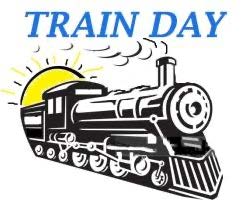
Saturday May 10, 2025 is National Train Day. We will be in Mortons Gap again this year. Your host is Rick Bivins, and this year Matthew Klahn, club president, and Sherry Smith have offered to provide the food: Hot Dogs, Italian Sausage, Macaroni Salad, Tomatoes and Cucumbers Salad, Chips and brownies. All we ask is a donation for the food and that you bring your own drinks for the day. Bathrooms will be available at the fire house. All are invited for a great time. Please RSVP Matthew Klahn for a food count, 270-421-6222 (call or text).